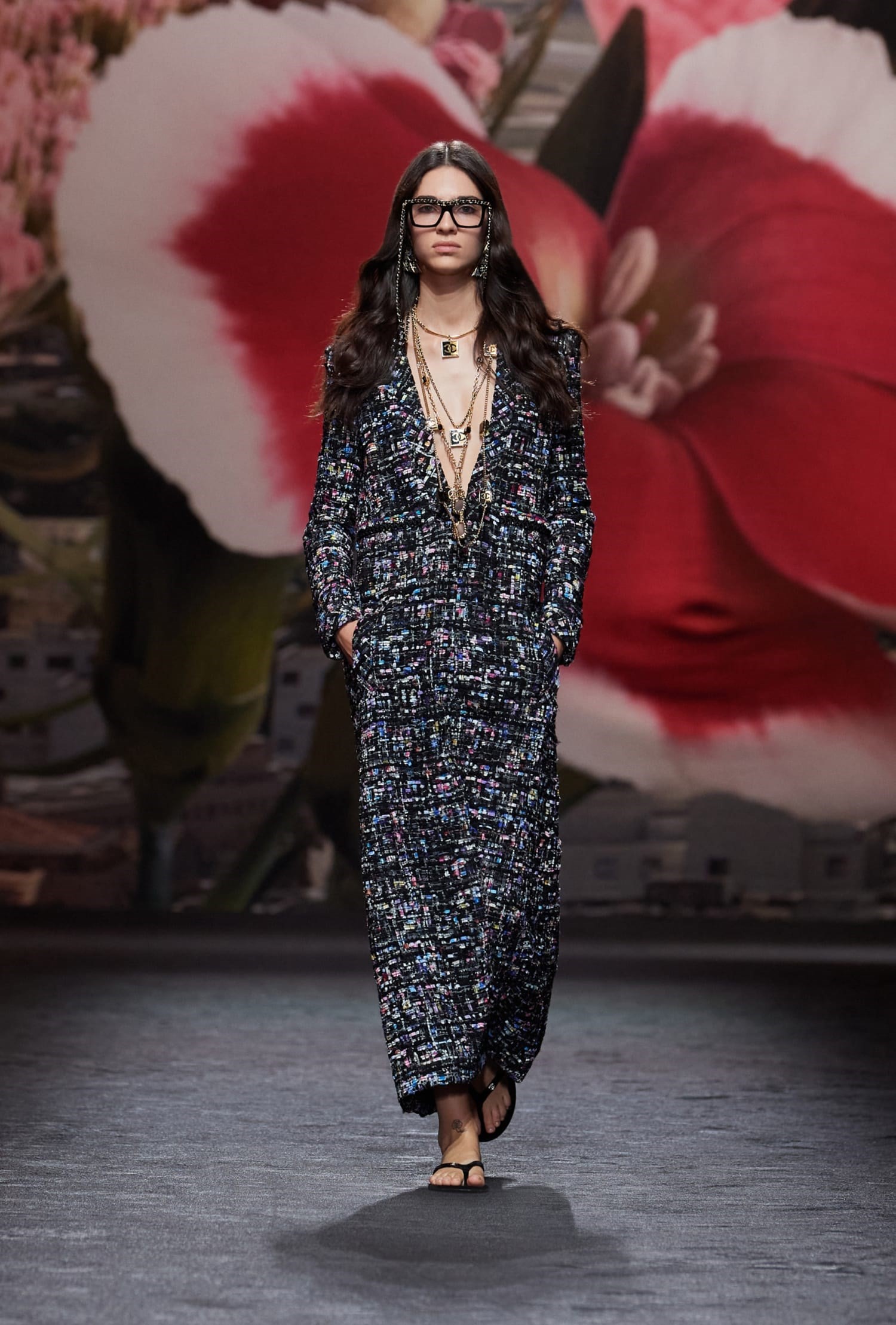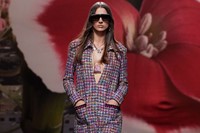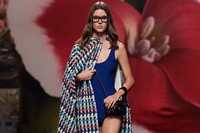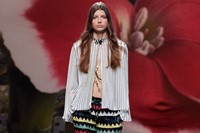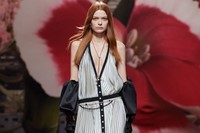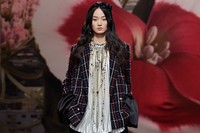The geometric black set of Virginie Viard’s Spring/Summer 2024 Chanel show was framed, all around, with idyllic coastal landscapes punctuated with giant blow-ups of flowers in full bloom. The landscape, I was reliably informed, was the hills of Hyères in the south of France, familiar to many who attend the fashion and photography festival whose roster of winners (Viktor & Rolf, Anthony Vaccarello, and Rabanne’s Julien Dossena) and judges (including, in 2015, Viard herself – with Karl Lagerfeld as art director) in world-renowned, even if its visual identity isn’t quite so well-known. Later, we realised that the black hollowed-out chambers of the Chanel set were no subtraction, but rather a representation of the Robert Mallet-Stevens villa of Charles and Marie-Laure, the Comte and Comtesse de Noailles. The voids in the set represented its windows, looking out over the same view.
The Villa Noailles was one of the first modernist houses in France, designed in December 1923. The same year, Le Corbusier published Vers une architecture (Towards a New Architecture), where he declared houses to be “machines for living in”. The only clothes suitable for living in those houses, appropriately enough, were Gabrielle Chanel’s, created with the same stylistic edicts of functionality, purity of line and often simplicity of materials. Look at a modernist skyscraper and a Chanel dress of the 1920s, and you can see the kinship (you’re able to do just that at the Victoria and Albert Museum’s current exhibition of her designs, which runs until February 2024).
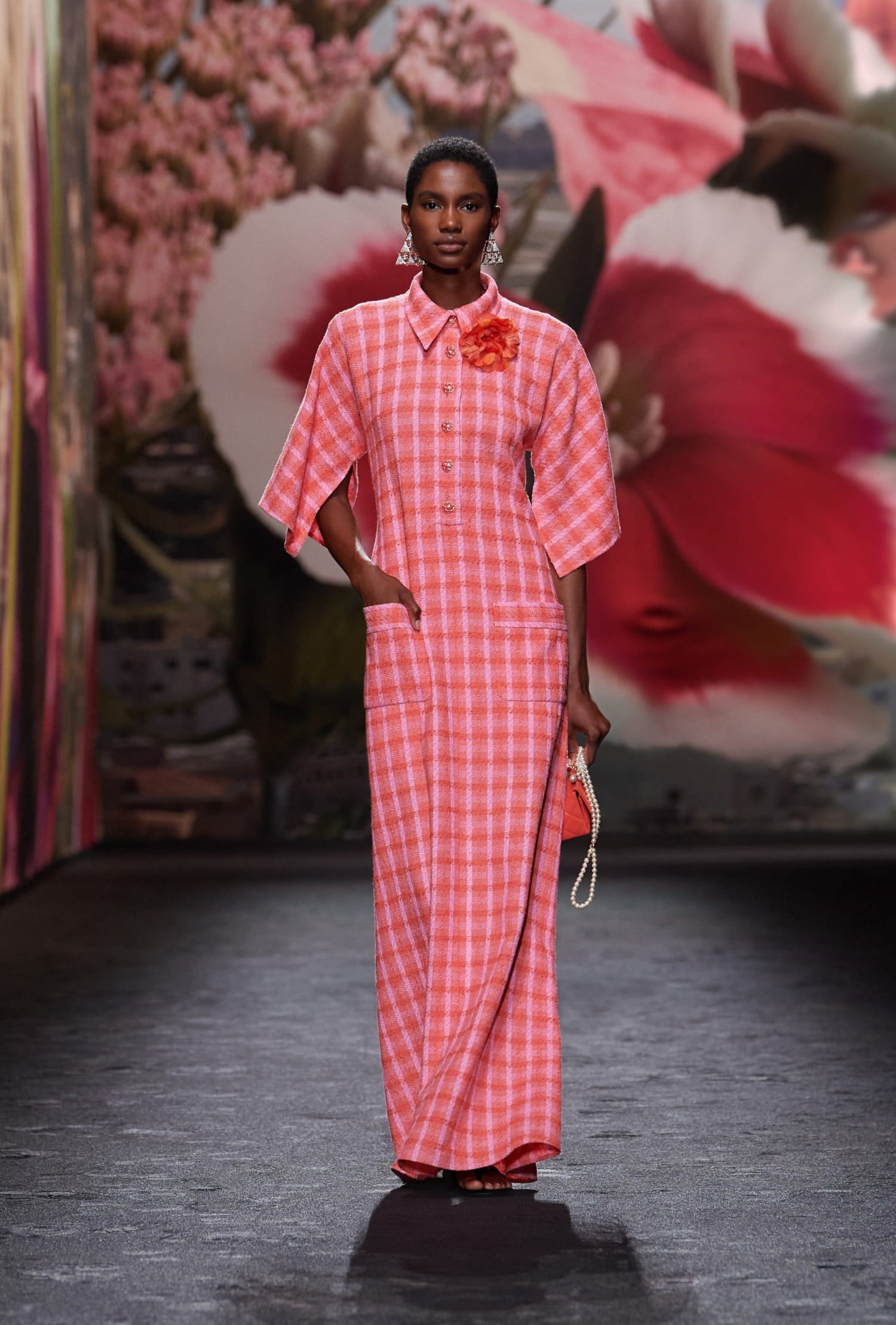
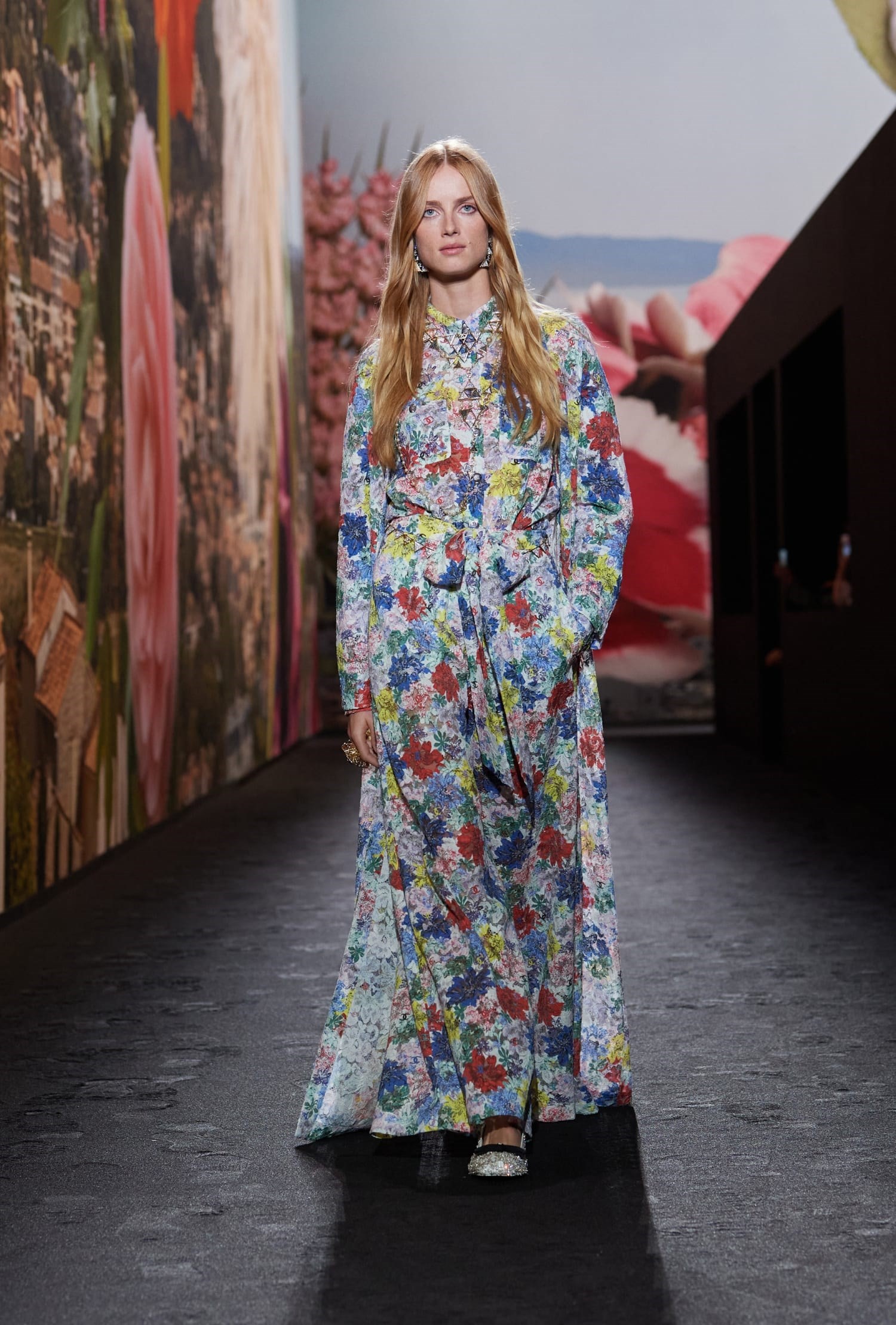
The clothes themselves this time, however, were less about a tub-thumping ideology of design than geared to enjoyment – the Villa Noailles was the aristocratic couple’s vacation home, after all, and Viard’s collection exuded a heady sense of summer. “An ode to liberty and to movement,” said Viard, of clothes that flowed around the form, cut to barely graze the body. Dressing gowns, towels, jackets in terrycloth – something first explored by Lagerfeld in the early 1990s, readily revived by Viard – all had a sense of nonchalance. There was plenty of denim, of course – and, indeed, those unexpected fabrics connected directly back to Gabrielle Chanel and her jersey dresses of the 1910s. Her first great fashion success came from her clothes created in the beach resort of Deauville, so there’s also an inextricable connection between Chanel and summer.
Throughout, there was a mix – garments shifted and recontextualised. Those jackets in towelling were accompanied by dressing gowns and wraps in Chanel’s precious tweeds, or easy lounging pyjamas in sequins. “Sophistication and informality, the tweed throughout the collection, sportswear and lace: I tried to bring one thing and its opposite together,” said Viard. “And the gardens and swimming pool of the villa Noailles, that exceptional setting, lend themselves to that rather well.”
